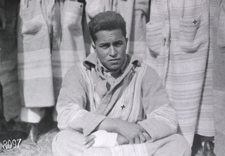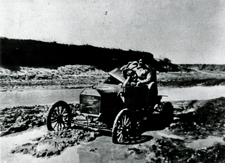Reservation and Hospital Health Care
Under the Office of Indian Affairs (c.1890-1925)
Health services administered by the Office of Indian Affairs were most often poorly equipped to combat the serious cases of tuberculosis, trachoma, smallpox, and other contagious and infectious diseases on Indian reservations during the late 19th- and early 20th-centuries. The federal government's program of assimilation of Native Americans into white culture dominated reservation health care during this period.
Native American traditions with regard to home, child-rearing, and treatment of illness were disregarded in favor of white ways. For this reason, health care was considered most effective when administered off the reservation. This meant removal of patients from their communities, as in the case of Alaskan Native patients of the Morningside Hospital in Portland, Oregon.
World War I briefly refocused United States government resolve overseas, where a number of Native Americans served the U.S. in armed combat. Some were wounded and treated at U.S. Army base hospitals in France, like the two men shown here.
Exhibit Case 4
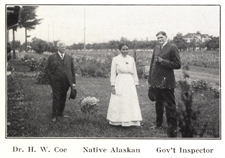
(From left to right) Dr. H. W. Coe, Native Alaskan, Government Inspector
from
The Insane of Alaska: For Sixteen Years Administered Under the Department of the Interior at Morningside Hospital, Portland, Oregon. Page 10 from the 1920 catalog of the facility.
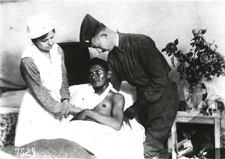
A wounded American soldier, a Choctaw Indian from Oklahoma in the U.S. American National Red Cross Hospital No. 5, Auteuil, France, c. 1917-1918.
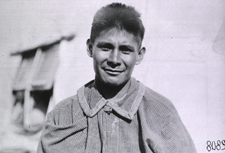
A Choctaw Indian patient of World War I stands outside the U.S. Base Hospital No. 41, in Paris, France, c. 1917-18.
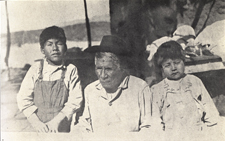
Native American victims of Trachoma from Contagious and Infectious Diseases Among the Indians, U.S. Senate Document, 1913
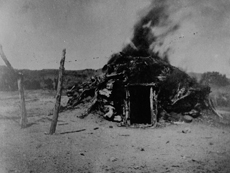
Burning of a Navajo Hogan that had been occupied by a victim of smallpox, near Indian Wells, Leupp Indian Reservation, Arizona, c. 1890-1910
Courtesy the National Archives and Records Administration
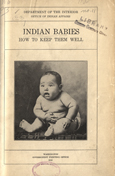
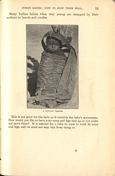
Indian Babies: How to Keep Them Well
Office of Indian Affairs, 1916.
The Pamphlet illustrates assimilationist philosophy of government care at that time.
Last Reviewed: March 5, 2024



